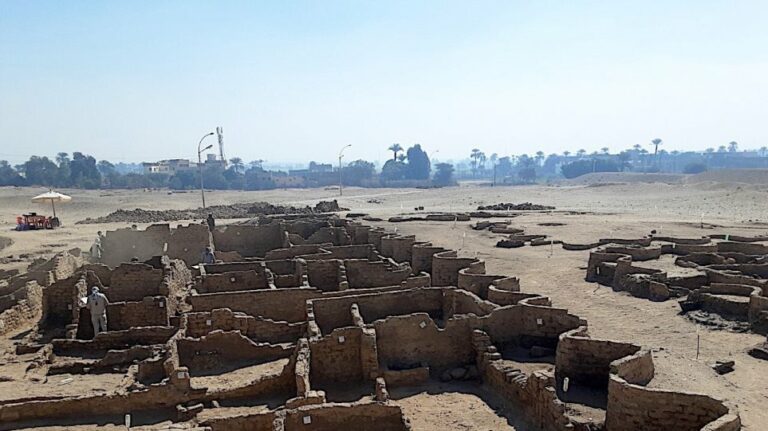n archaeological survey crew accidentally discovered some 250 rock-cut tombs at the Al-Hamidiyah necropolis near Sohag, Egypt. The graves range in age from the end of the Old Kingdom around 2200 B.C. to the end of the Ptolemaic period in 30 B.C., according to Nevine El-Aref of Ahram Online.
Several styles of tombs and burial wells are carved into different levels of a mountain face at the site, says Mustafa Waziri, secretary-general of the Supreme Council of Antiquities, in a statement from the Egyptian Ministry of Tourism and Antiquities. The necropolis is located in southern Egypt, on the West Bank of the Nile River.
One of the burials includes a sloping tomb with a false door and a hallway leading to a gallery with a shaft. The door is inscribed with hieroglyphs depicting the resident of the tomb slaughtering sacrifices while mourners make offerings to the deceased.
“Given their small size compared with the tombs reserved for royalty, which are of large sizes, these tombs may have been allocated to the common people,” historian Bassam al-Shamaa tells Ahmed Gomaa of Al-Monitor. “This provides more details about the daily life of ordinary people at the time”.
Russian Military ad vs. ‘Woke, Emasculated’ US – ‘Holy Crap’: Sen. Cruz Reacts To Video Comparison
Archaeologists conducting excavation work at the necropolis discovered numerous pottery shards and intact pots. Some of the pieces were used in daily life, while others, known as votive miniatures, were crafted for funerary purposes, says Mohamed Abdel-Badiaa, head of the Central Department of Antiquities for Upper Egypt, in the statement.
Read more: Smithsonian
Ask me anything
Explore related questions





